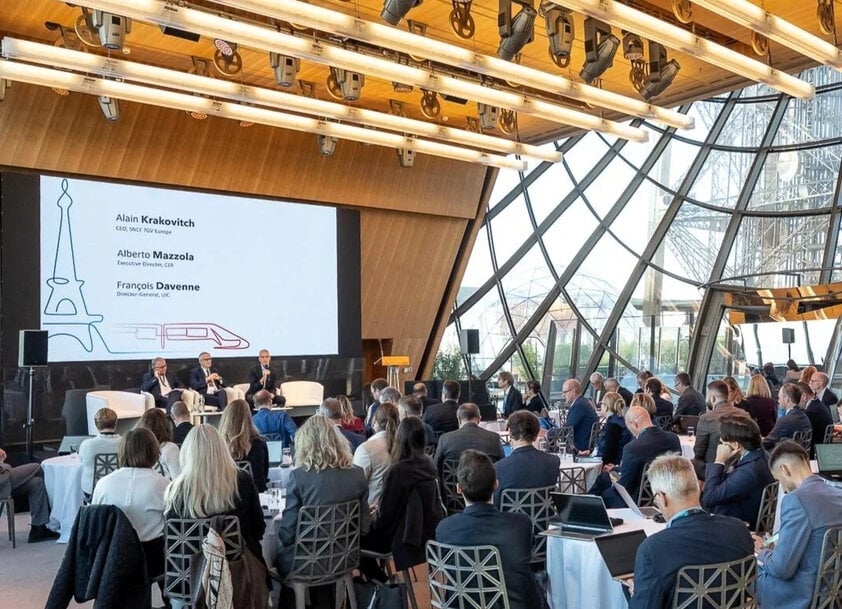railway-international.com
20
'25
Written on Modified on
European Rail Sector calls for synergies to realise High-Speed Rail Action Plan
European passenger rail CEOs from CER and the International Union of Railways (UIC) were hosted by SNCF Voyageurs in Paris for their annual meeting to discuss their long-term vision for customers and passengers.
www.cer.be

In an opening address praising rail for embodying the European Project better than any other sector, connecting people, strengthening the Single Market and creating opportunities, Pierpaolo Settembri, Deputy Head of Cabinet of the European Commissioner for Transport and Tourism, reaffirmed the Commission's commitment to a strong High-Speed Rail Action Plan. The gathering resulted in a resolution laying the groundwork for collaborative opportunities to boost the modal shift to rail across Europe.
European travellers are increasingly looking to high-speed rail (HSR) as a fast, comfortable, and sustainable way to travel for business, family, and leisure. Conscious of this popular demand, passenger rail companies are eager for the European Commission to unveil its HSR Action Plan and were bolstered by Mr Settembri's positive indication of an investment in line with the estimated €546 billion needed to build the inclusive and accessible network that will open up high-speed rail for all kinds of customers and needs. The initial commitment could start around €340 billion to be progressively increased to €500 billion.
In the resolution adopted at the meeting, passenger rail leaders emphasize the importance of coordinated European action to ensure the successful delivery of this vision, starting with the construction of a genuine European High-Speed Network connecting all capitals and major cities, equipped for real high-speed and fluid cross-border transit, and fully synergised with regional and conventional long-distance rail services. Accelerating the rollout of the European Rail Traffic Management System (ERTMS) will be key in this regard. Strong public-private partnerships (PPPs) and tailored financing schemes, based for instance on the regulatory asset-based model (RAB), are crucial to ensure a smooth and sustainable execution of this ambitious plan.
At the same time, the resolution stresses that financial and bureaucratic burdens on rail must be reformed to level the playing field between transport modes and ensure the competitiveness of the sector, including fair energy taxation, faster certification for rolling stock and harmonised train path allocation.
Participants also reiterated their commitment to realising seamless cross-border rail ticketing, emphasizing the recent and forthcoming achievements of the sector according to the CER Ticketing Roadmap. The rollout of the Open Sales and Distribution Model (OSDM), the extension of booking horizons up to 6 months and the wider adoption of the CIT Agreement on Journey Continuation (AJC) are among the most notable signs of progress.
Sector solutions such as these are delivering on the goal of endowing citizens with up-to-date, intermodal booking systems, while preserving the competitiveness of railway undertakings. Passenger rail operators therefore call on the European Commission to support their uptake through a stable and balanced regulatory framework.
Rail is the most reliable partner for the EU's efforts to decarbonise the transport sector. CEOs are confident that with supportive Commission interventions, the sector's commitments and investments over the past years can yield the seamless booking and ticketing experiences and joined-up high-speed rail services that citizens want and need.
You can find the 2025 Passenger Rail Resolution adopted by UIC and CER Members here.
www.cer.be

